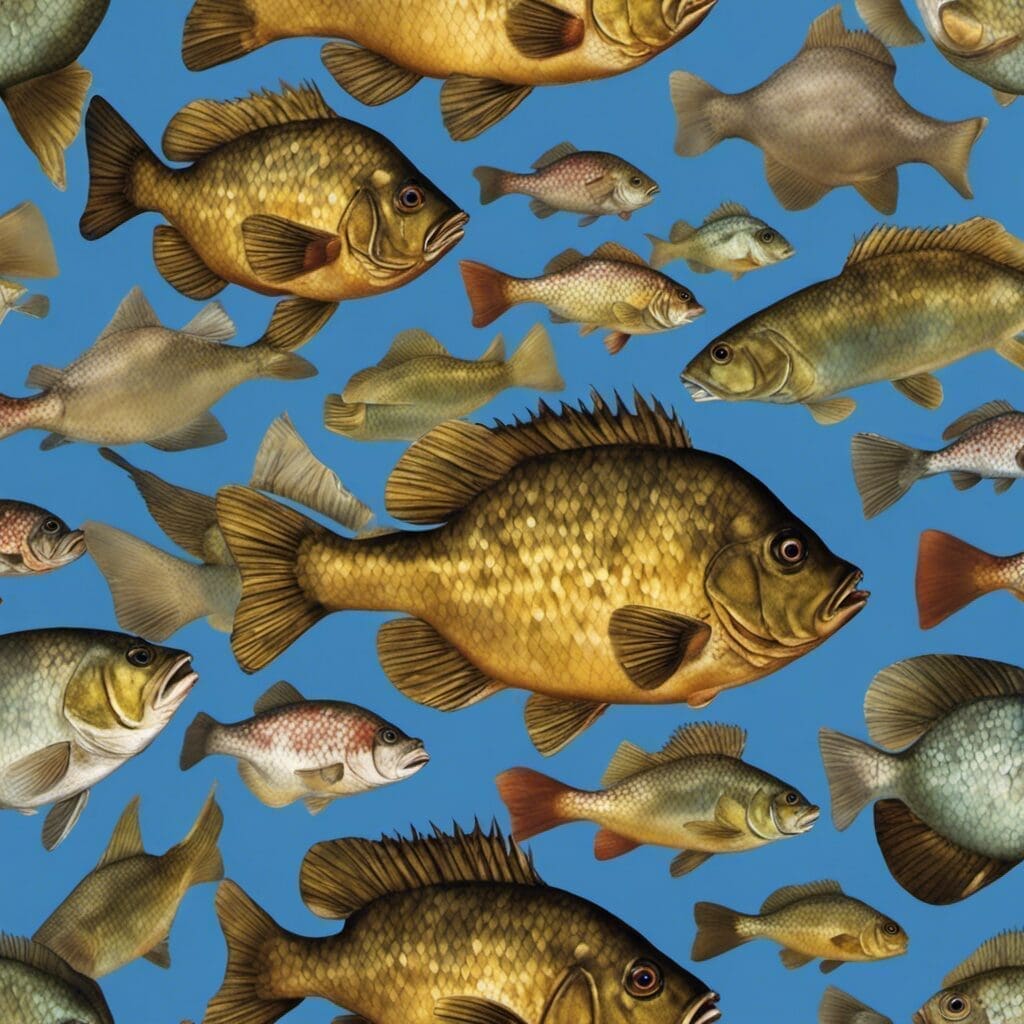Introduction
The Bluegill, scientifically known as Lepomis macrochirus, is a species of freshwater fish from the sunfish Family Centrarchidae.
Conservation Status
According to the International Union for Conservation of Nature (IUCN), the Bluegill is currently classified as Least Concern, reflecting its broad distribution and plentiful population. Efforts towards conservation include habitat protection and regulations regarding fishing times and limits.
Statistics
| Average | Range | |
|---|---|---|
| Length | 6 inches | 4 – 12 inches |
| Weight | 4.5 oz | 2 – 16 oz |
| Average Lifespan | 4 – 6 years |
Distribution
Native to North America, the Bluegill enjoys a widespread presence across most of the United States, Northern Mexico, and Southern Canada. While these fish do not display any particular migration patterns, they have been known to move towards deeper waters during the colder months.
Habitats
Bluegills prefer warm freshwater bodies such as ponds, slow-moving rivers, and shallow lakes with abundant vegetation. They usually reside at depths of 1 – 4 meters, though this can alter depending on the water temperature.
When and Where to See
As generalists in terms of habitat preference, Bluegills can be spotted year-round. They are most active during the day, particularly at dawn and dusk.
Best Fishing Locations
Some of the prime Bluegill fishing locations include:
- Wheeler Reservoir, Alabama.
- Clear Lake, California.
- St. Johns River, Florida.
- Lake Lanier, Georgia.
- Mille Lacs Lake, Minnesota.
- Lake Erie, Ohio.
- Pickwick Lake, Tennessee.
- Lake Champlain, Vermont.
- Winnebago System, Wisconsin.
General Tips
To find Bluegill, look for waters with ample vegetation and structures like docks and fallen trees. They are known to hide and hunt in these areas.
How to Catch
Bluegills are known to bite on a variety of baits, including live bait such as worms and crickets, artificial lures, and fly fishing flies. Trolling, casting, and bottom fishing are effective methods for catching these fish, especially during early morning or late evening hours.
Identification Guide
Bluegills are recognisable by their deep, flattened, and laterally compressed bodies. They have a characteristic dark spot at the base of their dorsal fin and are typically blue on their lower jaw and gill cover, hence the name.
Culinary Profile
Bluegills’ meat is white with a light, sweet flavor, making it popular among anglers. They are often pan-fried or grilled, though they can also be used in various recipes like soups and stews.
Additional Information
Feeding habits of Bluegills vary with their age and size, but generally, they consume both plant and animal matter. Breeding occurs in groups, where males build nests and guard the eggs and fry. They face natural threats from larger fish and birds while human-induced dangers include pollution and habitat loss.
References and Further Reading
- IUCN Redlist – Lepomis macrochirus.
- iNaturalist – Bluegill.
- Missouri Department of Conservation – Bluegill.

